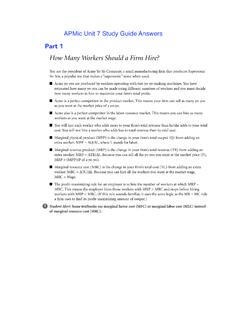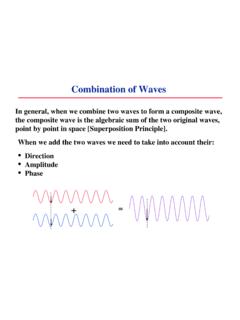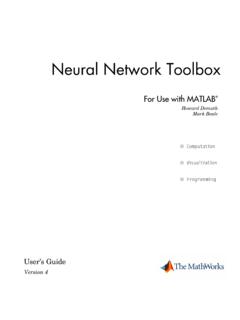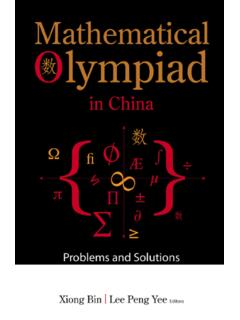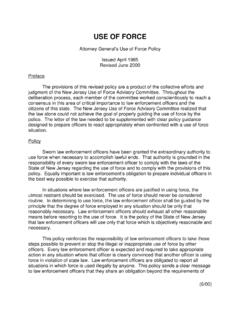Transcription of Mirror Images: Marginal Product and Marginal Cost
1 Advanced Placement Economics Microeconomics: Teacher Resource Manual Council for Economic Education, New York, 2393 MicroeconomicsMirror Images: Marginal Product and Marginal Cost Most of the activities in this unit concern a firm s costs of production. You will learn about a firm s costs of producing a given amount of its Product total fixed cost (TFC), total variable cost (TVC), and total cost (TC). You also will work with the firm s costs of a typical (average) unit of output average fixed cost (AFC), average variable cost (AVC), and average total cost (ATC).
2 The most important measure of a firm s cost is Marginal cost (MC) because it shows the change in the firm s total cost when it produces one more unit of output. You will not be surprised to find that the cost of producing output is based on the productivity of the firm. If a firm is highly productive, that means it is producing a lot of output from a given amount of resources, thus reducing its costs of production. Firms that are inefficient will have high production costs and be at a competitive disadvantage.
3 Because high productivity implies low cost, economists treat a firm s cost measures as Mirror images of its productivity firm makes production decisions in two time horizons. The short run is a period of time in which the amount of some key factor of production, often capital, is fixed. Other factors, such as labor, are variable because the firm can increase or decrease the amount of these resources in the short run. In the long run, all resources are variable and can be increased or decreased by the firm.
4 There are three measures of the productivity of a The firm s total physical Product or total output (Q) is how many units of its good or service the firm produces in a specified period of time. If a firm produces 100 units per week, we express this as Q = The firm s average physical Product (APP) shows how many units of output are produced by an average unit of labor (the variable resource). If the firm uses five units of labor (L) to produce 100 units of output each week, we say APP = Q/L = 100/5 = 20 units of The firm s Marginal physical Product (MPP) tells us the change in total Product when the firm adds an extra unit of labor to its fixed stock of capital.
5 If, as a result of adding a sixth unit of labor, the firm s total output increases from 100 units to 114 units, then the MPP of the sixth labor unit is +14 units: MPP = DQ/DL = +14/+1 = + Alert: The terms average physical Product and average Product mean the same thing. Also, Marginal physical Product is the same as Marginal Product . Some textbooks use APP and MPP, while others use AP and MP. But you cannot use average terms interchangeably with Marginal terms!The key productivity principle in the short run is the law of diminishing Marginal productivity (also called the law of diminishing Marginal returns).
6 Assume a firm operates in the short run with a fixed amount of capital and with labor as its variable resource. The law of diminishing Marginal productivity states that as the firm adds more labor units to its fixed stock of capital, eventually the MPP from an extra unit of labor will diminish. SOLUTIONS ACTIVITY 23926/07/12 5:25 PM240 Advanced Placement Economics Microeconomics: Teacher Resource Manual Council for Economic Education, New York, A: The Productivity Measures of a FirmTable is a short-run production chart showing how the productivity of the firm changes as it adds additional units of labor to its fixed stock of capital.
7 Assume the data refer to the firm s productivity in a one-week Complete Table Some data are already included in the chart. Put the values of MPP at the new labor level. For example, when the firm increases its labor from one to two units per week, its total output increases by 15 units. Write +15 at L = 2 in the MPP The Three Productivity Measures of a FirmLQMPP = DQ/DLAPP = Q/L0 0 110+ + + + + + +0 3 ACTIVITY 3-2 (CONTINUED) 24026/07/12 5:25 PMAdvanced Placement Economics Microeconomics: Teacher Resource Manual Council for Economic Education, New York, 2413 Microeconomics2.
8 When you have completed Table , plot the L and Q data in Figure (The first two combinations are plotted for you already.) This Q curve shows how much total output the firm produces with different amounts of labor. Note that the firm s total Product increases as it adds more labor, but eventually the total Product declines if the firm adds too many labor units on its limited amount of Total Product010203012345678405060705152535455 565758580 QLABORTOTAL PRODUCTSOLUTIONS ACTIVITY 3-2 (CONTINUED) 24126/07/12 5:25 PM242 Advanced Placement Economics Microeconomics.
9 Teacher Resource Manual Council for Economic Education, New York, Now plot the L, MPP, and APP data in Figure You can connect the MPP points with a solid line and the APP points with a dotted line. (Some combinations are plotted for you already.) Plot the values of MPP at the new labor level. For example, put a dot on the graph at the combination of L = 2 and MPP = +15 since the MPP resulting from adding the second labor unit is 15 units of output. Note that both MPP and APP increase initially but then decrease as the firm adds more units of Marginal Physical Product and Average Physical ProductMPP, APP 22612345678101418 40481216 LABORMPPAPP4.
10 Diminishing Marginal productivity sets in with the addition of the third labor The average physical Product continues to increase as long as the Marginal physical Product is (greater than / equal to / less than) the average physical Can the average physical Product of labor be negative? Why?APP cannot be negative because it is the ratio Q/L and neither Q nor L can be ACTIVITY 3-2 (CONTINUED) 24226/07/12 5:25 PMAdvanced Placement Economics Microeconomics: Teacher Resource Manual Council for Economic Education, New York, 2433 Microeconomics7.
